Italy
Movie review: Three foreign animated films from 2017-2019
Posted by dronon on Wed 24 Jan 2024 - 10:45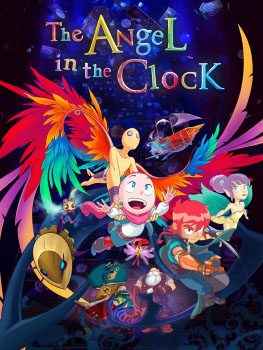 Three foreign animated film reviews!
Three foreign animated film reviews!
White Fang, and
The Bears' Famous Invasion of Sicily.
All of these films successfully blend 3D and 2D animation in their own different styles.
White Fang is the most 3D, applying a brush-like texture to characters to create a 2D, painted look.
Symbol of a Nation slated for Anthrocon release
Posted by Fred on Sat 10 Jun 2017 - 20:44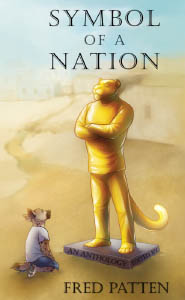 Symbol of a Nation, edited by Fred Patten, is launching at Anthrocon 2017 in Pittsburgh, Pennsylvania over the June 29-July 3 five-day weekend.
Symbol of a Nation, edited by Fred Patten, is launching at Anthrocon 2017 in Pittsburgh, Pennsylvania over the June 29-July 3 five-day weekend.
Symbol of a Nation is an all-original anthology of 11 short stories and novelettes featuring the anthropomorphized official animal (or bird) symbols of nations. This is designed to appeal to both s-f & fantasy fans, and fans of political science.
Below are the list of countries and animals that will be included in this set:
Belgium – lion
Chile – Andean condor
Denmark – mute swan
Italy – wolf
Malaysia – tiger
Mauritius – dodo (extinct)
Namibia - oryx
Romania - lynx
Singapore - lion
Spain - bull
U.S.A. – bald eagle
Vietnam – water buffalo
NYC has anthro animation festivals, too
Posted by Fred on Sun 10 Feb 2013 - 01:34Despite the implication on Flayrah, Los Angeles is not the only city to have festivals of animation with anthropomorphic stars. On February 28th through March 24th, the 16th Annual New York International Children’s Film Festival will play at seven different locations in NYC. The Festival will screen 100 different films (some live-action), and is expected to draw an attendance of 25,000+. It will present many of the films in the U.S. for the first time, to qualify them for 2013 Oscars.
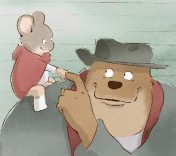 Among the films are several that have been covered on Flayrah, including the Belgian Ernest & Celestine, about a mouse and a bear who become friends (French with English subtitles; Feb. 28 at Tribeca Cinemas); The Wolf Children (Ame & Yuki, the Wolf Children), about a college student who marries a werewolf who dies, and must raise their two werewolf toddlers alone (Japanese with English subtitles; March 3 at the Asia Society and 16 at SVA); The Day of the Crows, mostly about a feral child raised in the forest, but with some fantasy scenes of anthropomorphic animal-headed forest spirits (French with English subtitles; March 10 at FIAF); Welcome to the Space Show “with an intergalactic cast of thousands” (premiere of the English dub; March 9 at SVA), and Meet the Small Potatoes, for pre-schoolers about a musical group of animated potatoes who rise from small-town beginnings to international rock stardom (March 16 at the IFC Center and March 24 at the DGA Theater).
Among the films are several that have been covered on Flayrah, including the Belgian Ernest & Celestine, about a mouse and a bear who become friends (French with English subtitles; Feb. 28 at Tribeca Cinemas); The Wolf Children (Ame & Yuki, the Wolf Children), about a college student who marries a werewolf who dies, and must raise their two werewolf toddlers alone (Japanese with English subtitles; March 3 at the Asia Society and 16 at SVA); The Day of the Crows, mostly about a feral child raised in the forest, but with some fantasy scenes of anthropomorphic animal-headed forest spirits (French with English subtitles; March 10 at FIAF); Welcome to the Space Show “with an intergalactic cast of thousands” (premiere of the English dub; March 9 at SVA), and Meet the Small Potatoes, for pre-schoolers about a musical group of animated potatoes who rise from small-town beginnings to international rock stardom (March 16 at the IFC Center and March 24 at the DGA Theater).
Poster gallery: 'Cartoon Funny Animals Won the War'
Posted by Fred on Tue 8 Jan 2013 - 17:05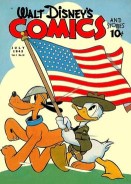 Jerry Beck at the Cartoon Brew has posted this gallery of sixteen World War II-related funny animal comic book covers.
Jerry Beck at the Cartoon Brew has posted this gallery of sixteen World War II-related funny animal comic book covers.
This goes nicely with my retrospective, “Talking Animals in World War II Propaganda”, published here last January 5th.
Retrospective: Talking animals in World War II propaganda
Posted by Fred on Thu 5 Jan 2012 - 23:03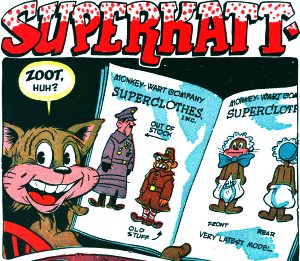 You are probably thinking of the USA's World War II propaganda animated cartoons. There were certainly lots of them!
You are probably thinking of the USA's World War II propaganda animated cartoons. There were certainly lots of them!
Long articles could be (and have been) written on the adventures of Donald and Daffy Duck, Bugs Bunny, Gandy Goose and Homer Pigeon. In the last decade, most American propaganda cartoons have been re-released on DVD, so we can see them for ourselves; they are also on YouTube.
Volumes could also be written of the wartime funny-animal comic book and newspaper comic strip characters who fought the Axis, usually on the Home Front against saboteurs and hoarders. World War II's talking-animal propaganda novels are less well-known. In fact, they are forgotten today except in movie-adaptation credits. That’s too bad, as the books are still enjoyable reading.